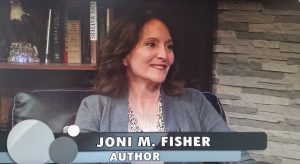Jane Waters Thomas interviews authors in her series The Writer’s Den. In the March 1, 2017 telecast, Jane interviewed me about the writing process used in developing the Compass Crimes Series. The first book, South of Justice, came out in May 2016. North of the Killing Hand came out in October 2016. The “West” book is scheduled for release in October 2017. A link to the video appears near the end of this blog.
PLAN
I am a plotter, that is I plot out the entire story before I write to target research on particular topics and to prevent wasting time writing scenes that don’t move the story along. Pantsers, that is those who write by the seat of their pants, tend to think about a story and plot in their minds and then write in bursts of time. The process of transforming a story concept into published form takes years of practice and study of the craft of storytelling. No matter which process the author uses, the reader sees only the result.
RESEARCH
Man, oh man, the internet can connect me to experts and data in seconds! I enjoy the field-research phase of the writing process best because I meet wonderful experts and get to try new things–like field-stripping an M-16, visiting foreign countries, and living on a trawler for a while. What’s not to love when work is such fun?
WRITE
Technology has vastly improved the writing process. I’m not sure I would have had the fortitude to type and retype a ninety-four-thousand word manuscript with each revision on a manual typewriter. Today, a writer can use computerized document software like Microsoft Word, or Scrivener to create novel-length manuscripts. Changes, additions, revisions are simply keystrokes. Move a word. Move a sentence. Move a paragraph. Move a chapter. Easy peasy. Writers today don’t even have to be proficient at typing. I use Dragon Naturally Speaking software to dictate my first draft. Sure, it tosses in a completely inappropriate homonym occasionally, but I can dictate faster than I type, so my productivity improves with technology.
MARKET
To quote Author and Pilot Jamie Beckett, “Writing is an art. Publishing is a business.”
Vincent Van Gogh, one of the most influential painters in the world, did not earn a living a a painter. He lived and died poor. He was unable to sell his work. Don’t be the starving artist. Learn the industry. Learn the market for your work. Learn about marketing principles for authors. Find social media sites for readers, like Goodreads, and connect with readers.
Authors today are expected to manage both the art and the business elements to build a career. Gone are the days when the author drops off a manuscript at the publisher’s then deposits the advance check and tromps back home to start the next book, leaving all the editing, proofreading, formatting, cover art selection, copyright, typesetting, layout, printing, binding, distribution, and marketing for the publisher to handle.
Authors are expected to participate in marketing through book signings, social media, and more. Building a readership takes time. Tom Clancy didn’t quit his insurance job the day his first or second book was published. Diana Gabaldon, author of the Outlander series, had a tough time convincing a publisher to contract her books. Her stories combined historical settings, war, romance, time travel, suspense, and mystery. Publishers didn’t know where to shelve her books in bookstores, so they didn’t know how to place her books where her readers could find them. In time, readers found her stories and today the Outlander series has been made into an amazing televised mini-series.
Click on the picture to view the interview.
REPEAT
My readers, God bless them all, have encouraged me in this long process. They show up at book signings from New Mexico to Florida. They buy my ebooks in the U.S., England, Canada, Japan, and Australia. Thank you, readers, for your purchases, your reviews, and for recommending my books to your friends. So on I go, writing the next one.
